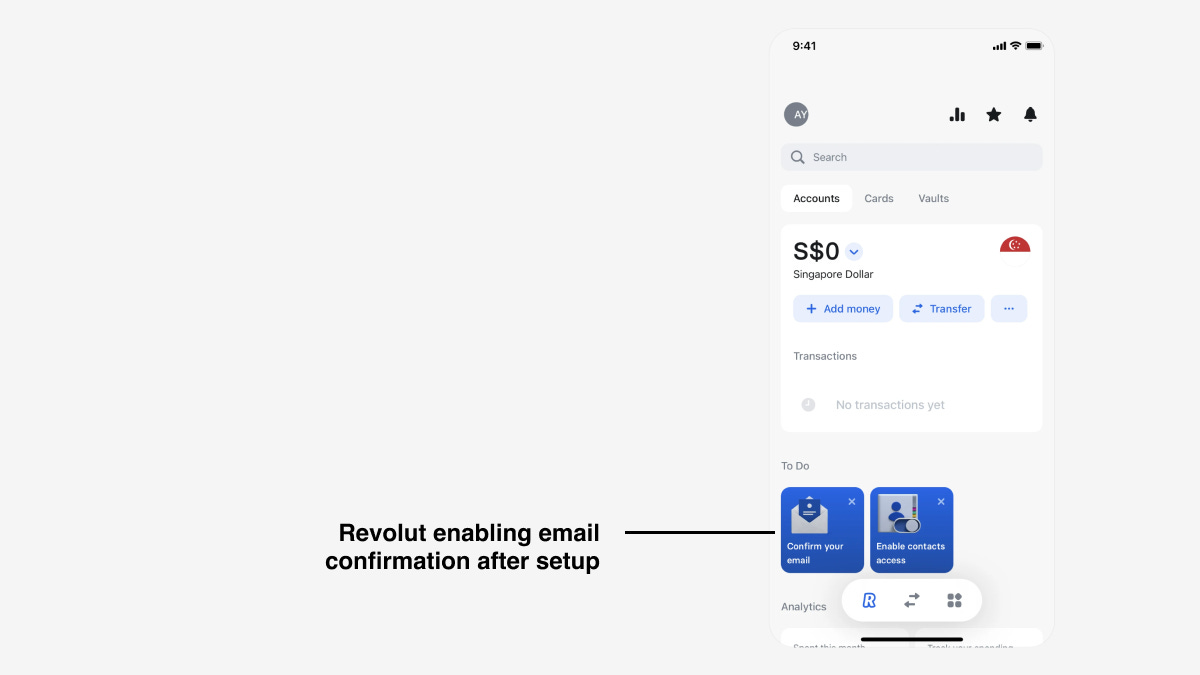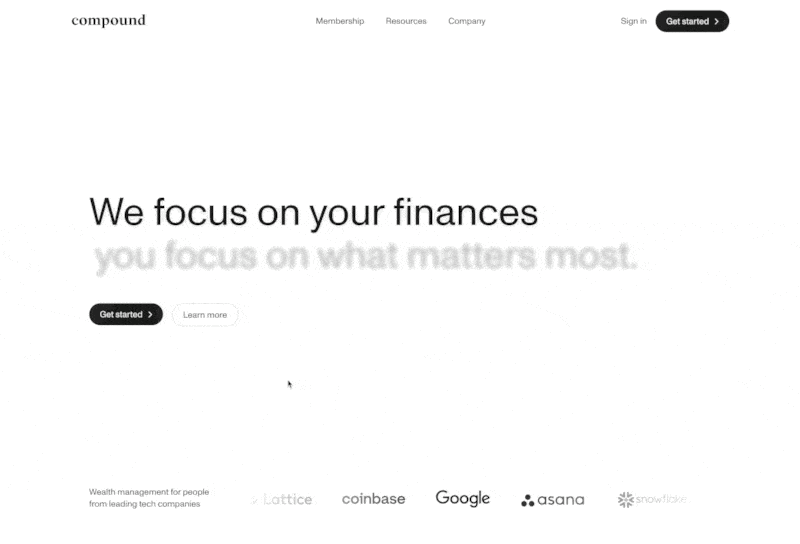10 secret metrics of design-led startups
Issue #002 - The success metrics of design-lead companies and the one you should focus on
In our pursuit of survival and success, the secrets to a thriving product become a holy grail, particularly for design-led companies. The potential for success is palpable – 32% more revenue and 56% higher total returns to shareholders than their counterparts.
These compelling statistics originate from a comprehensive McKinsey study, meticulously examining 2 million financial data points and 100,000 design actions across five years.1
If you want to start investing in a company that aims at being design-led, you should do it properly. In this article, we’ll see how to get the fundamentals right, unveil the key success metrics, and define the only one you need.
The foundations of a design-led company
User-centricity is your fuel
Engage with your users at every phase of your development process, every week
Use prototypes early in your process to save precious delivery time
Keep on iterating with user feedback after all of your delivery
Genuinely help your users with a world-class customer support
Your Product decisions are decided in a data-driven, objective way.
Every major Product and Design decision should be backed by data
Every Product and Design decision should be backed by insights
If you can’t back your product and design decision with data or insights, then clearly write down your hypotheses and vision
Embed user-centricity in your company values
Being design-centric means embedding the value of design at every level of your company.
Foster a company-wide culture of customer-centricity
Everyone should be able to connect their daily job to a client's reality. Making sure that you always serve this purpose is critical to the success of your company
Make sure that everyone develops a taste for what a great product is, this will have compounding effects
Now, if it's something that you are already doing or envisioning to provide soon, you should consider leveraging design-led metrics to measure where you are and improve your product.
The classic metrics of product-led companies
You’re probably familiar with those first ones, if so, you can just skip to the next section.
Leading Metrics - User satisfaction
Net Promoter Score (NPS) = % of Promoters - % of Detractors. Promoters (score 9-10) are loyal enthusiasts who will keep buying and refer others. Detractors (score 0-6) are unhappy customers who can damage your brand through negative word-of-mouth. 7 & 8 score being neutral ratings.
Customer Satisfaction (CSAT) = 0-10 ratings.
This metric is a great indicator of quality for high-volume or more complex services. It should be narrowed down to the different parts of your app, flows, or features to have a fine-tuned understanding of how your product performs.
Product-led startups prioritize user experience, so metrics like NPS and CSAT surveys are key instruments. These help gauge how well the product meets users' needs and expectations.
Lagging metrics
Conversion Rates
User Acquisition
User Engagement
Churn Rate
Monitoring key metrics like user satisfaction, conversion, engagement, and churn rates can help identify and rectify product experience anomalies. Most of the startups already apply them and they shouldn’t be a surprise.
The secret metrics of true design-lead startups
When companies choose to adopt a more design-led approach, they often seek to outpace their competitors, completely redefine the industry they’re in, or create entirely new market spaces. This is where fewer dashboards are automatically pulled and where true designers’ skills are required.
Welcome to the world of design-led metrics:
Usability metrics
These include success rate (the percentage of tasks completed successfully), error rate, and learnability. These metrics directly evaluate the product's design from a usability standpoint.
1. Task Success Rate
= (Number of tasks successfully completed / Total number of tasks) * 100%
2. Error and abandonment Rate
= same maths as above, complementary results.
→ Usability metrics are great assessments for your product when you’re competing with high volumes of traffic, multiple devices, and platforms. A slight increase in task success rate can leverage giant streams of revenue.
Time to …
3. Time to Task Completion
This measures how long it takes a user to complete a task. A well-designed product allows users to complete tasks quickly and efficiently.
4. Time to Value
Measures the period from when your users start using your product or service until they realize its value. It's a crucial success metric, where faster time to value often translates to higher customer satisfaction and retention rates.
For example, Spotify uses a metric known as 'Time to First Song.' This measures the time it takes from when a user first opens the app to when they start playing a song. The idea is to get users to their desired value (listening to music) as quickly as possible, and this metric helps Spotify optimize their app experience towards that goal.
5. Time spent
Measure the time users spent on a specific flow, tab, or action.
For example 'Time Spent Listening' is a key success metric of Spotify while Twitter is looking at time spent on each of their tabs. When Twitter noticed that users were spending a lot of time watching videos, they launched their live-streaming service, Periscope.
→ ‘Time to’ metrics results should be compared with alternatives your users have at hand to get what they’re looking for.
Number of …
6. Number of actions
This counts the number of actions that your user must accomplish in order to complete a task—clicks, swipes, or completing text inputs. You should note that all of those actions have different inherent complexities. I like to weigh those differently in order to reflex a more precise complexity. (Click = 1, swipe = 2, text input = 5).
→ If you want to reduce friction you should always prefer multiple answers questions over text fields.
→ Having thoughtfully designed flows compare to your competitors often means better conversion results and user satisfaction.
7. Number of concepts
This counts the number of concepts that are unique to your product and that you chose to introduce to any new user. Those concepts must be understood, and users must be knowledgeable about them in order to be autonomous with your app.
→ Reducing this number will drastically reduce the inherent complexity of your product. It's especially important for first-time users when you want your user to instantly feel comfortable.
→ Using terms like Saved, Bookmark, Search, Notifications, Likes, Library, Profile, Settings, etc. don’t count as they’re already familiar in people’s minds. Users know what they will get. Terms like Spaces or Home won’t get you far and count as concepts.
For example ‘Blinks’ for Blinkist or ‘Tweets’ for Twitter are great examples featuring both just 2 concepts respectively in their apps
8. Flow discontinuity
This translates into your ability to design for discontinuity. In your product, there will be discontinuities. They can be both inherent to your experience by design or externally provoked by users. Any flow discontinuity will drastically impact your user experience and you must prepare for it.
Inherent discontinuities for your experience can refer to:
App change (email verification for sign-up, copy-paste from another app, calendar check for conflicts, …)
The need to remember complex information for future usage (multiple digits, long numbers, or any acronyms)
External discontinuities provoked by users can’t be controlled.
They refer to an important email received, someone talking to them, or any life event external to your flow.
They can’t be controlled of course but they can be softened by easing the user experience. Remembering the last screen visited, saving cache, great loading screen, or story-branded launch screens.
Outside of screens
This pictures your users in the reality of their daily chaotic and busy lives. It supports their reality and context.
9. Physical action required
These metrics can refer to all the mandatory steps or waiting times required outside of screens that your users must perform. (Take their passport, see what’s left in their fridge, take a picture, …)
→ Any physical action required will involve huge drops in completion rates. Make sure to set the expectations right from the beginning to avoid deception.
10. Incompressible waiting time
Any of those will immediately create discontinuity and friction in your flows. This can imply waiting for a download to finish, a manual ID verification, a customer success answer, or even a waitlist to open.
Simply put, your users will leave your app, close the tab, and might completely forget about you.
Thinking about the mandatory ones as foundations of your experience is key to transforming them into opportunities.
Uber, focused heavily on ETA accuracy. This measures how close the actual arrival time of a driver is to the initially estimated time. It's not a typical success metrics, but it was crucial for Uber because it directly impacts customer satisfaction and trust in the platform. They continually work to improve the accuracy of their ETAs using sophisticated predictive models.
Behavior Change
A radical design may aim to alter user behavior significantly. Measuring changes in behavior pre and post-product introduction can be a sign of successful design influence.
Leveraging your own success metric
Even though all of the above are important to monitor and can be applied broadly, you might want to start thinking about complementary ones, specific to the behavior change you want to reach, or specific to your targeted audience, or business.
Creating your own success metrics, often based on tangible scenarios is the true secret of any design-led company.
Loom’s custom success metrics is to elimitate traditional meetings, what’s even stronger is that they’re advertising it every month by email to keep you engaged.
→ Remember, the goal of these unique success metrics is to align your company's goals with the behaviors and needs of your users. By choosing the right metric for your company, you can drive behavior change, improve customer satisfaction, and ultimately, enhance your business performance.
Time to create yours
Creating a successful design-led startup goes beyond the classic product metrics. It not only involves integrating user-centricity into your company values, making data-driven decisions, and continuously measuring and refining your experience. It must also include creating your own success metrics to drive your business forward with magnitude.
Leveraging ideas from some of the 10 secret metrics designers have in their toolbox, you should be in a better position to uncover which success metrics you should pursue.
Achieving this balance between compelling behavior change and thoughtful design is what sets successful design-led startups apart. So, don't just create - measure, refine, and repeat. The success of your design-led company depends on it.
Product of the month
On a lighter note, Lazy is a new productivity tool that was recently launched on Product Hunt. They aim to create a note-taking OS that will kill context-switching.
Their landing page is interesting to deconstruct as it encapsulates a lot of trends in it. Trends include:
Start using the product from the hero section of your landing page
Instantly promote Keyboard shortcuts to get started
Innovative gradients and adjustment in border brightness with cursor
Dark mode and space environment
Interactive cards on hover
Apple-like grid layout
I’m personally tired of those branding where too many things are displayed on the screen even though they are beautifully executed. Those landing pages sometimes feel like a Marvel movie.
Has anyone tried their product? Would be curious to see if we can get passed this first impression as the product details will hopefully be delightful.
Sharing with you the real landing page of the month, Compound. (Thanks Louis)
Simple and effective design layout
Cohesive story and animation – promoting each other
Leveraging just one silver bullet, the keyboard shortcut to trigger the CTA (once on the Membership page)
Promoting real screenshots of the product, without cosmetics
Actionable links
How to Do Great Work – Paul Graham
How great products work: Low Floor, High Ceiling – Enzo Avigo
Your guide to structure UX Research - Cousto
Did you learn something new from this post?
This is just the second edition of my newsletter, thank you for reading that far. Framing Design is still in beta, but if you find this post helpful, consider sharing it with one friend.
If you have any suggestions or just appreciate what you’re reading, just reply to this email with your feedback. I will personally respond to all emails.
Talk to you next month!
Keep Framing the change.
Micka 🤙

















